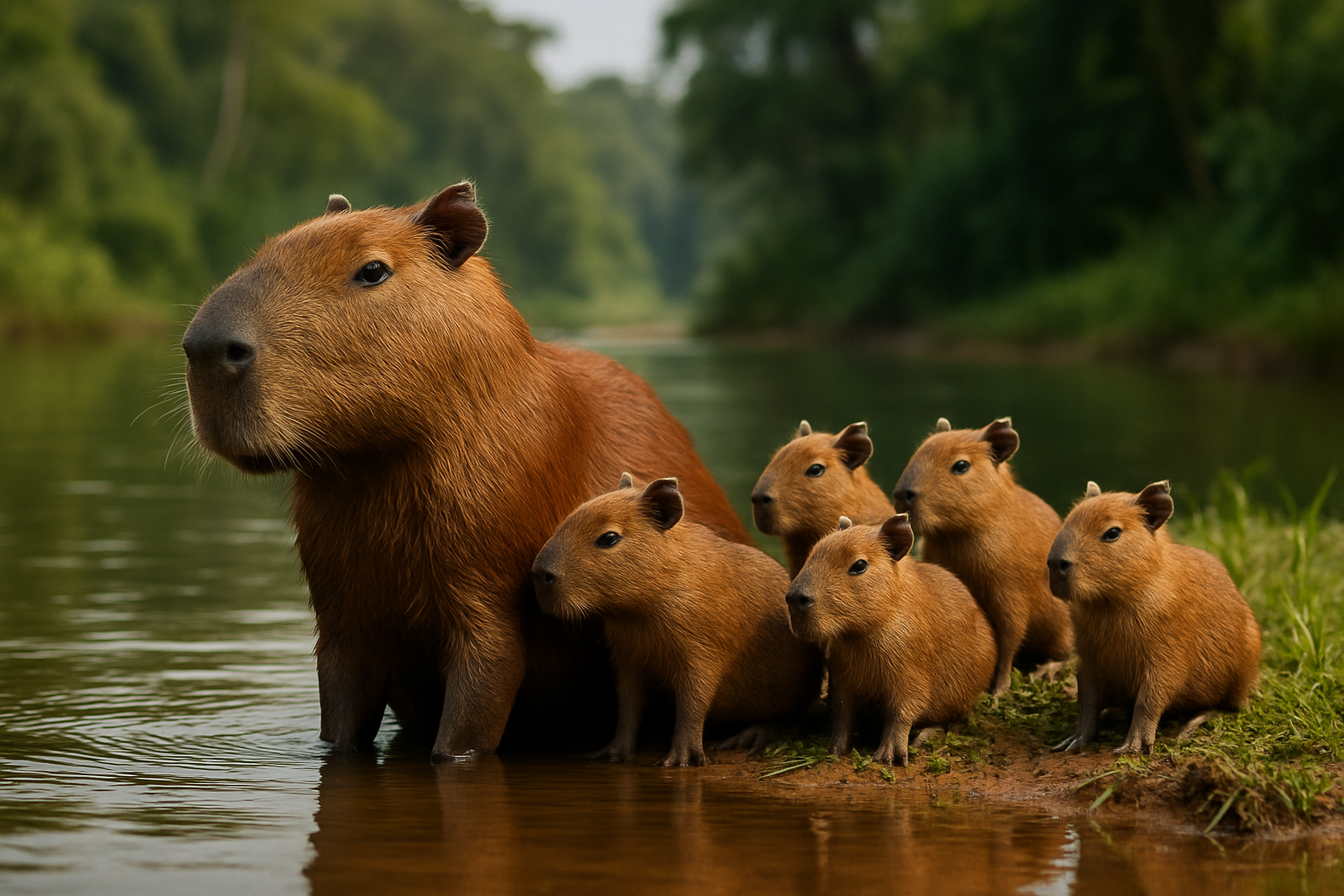Unveiling the Secret World of Capybara Social Dynamics
In the lush wetlands of South America, an extraordinary mammal reigns supreme as the world's largest rodent. The capybara, with its barrel-shaped body and endearing expression, has long captivated animal enthusiasts. But beyond their adorable appearance lies a fascinating social structure that rivals some of the most complex animal societies in nature. This article delves into the intricate world of capybara social dynamics, exploring their unique behaviors, hierarchies, and communication methods that have evolved over millennia.

The Foundation of Capybara Society
At the heart of capybara social structure lies the herd, a tightly-knit group that forms the basis of their daily lives. These herds are not random assemblages but carefully organized units with distinct roles and hierarchies. The composition typically includes a dominant male, several females, their offspring, and subordinate males. This structure provides numerous benefits, including protection from predators, efficient foraging, and enhanced breeding opportunities.
The dominant male plays a crucial role in maintaining order within the group. He establishes and defends territory, mediates conflicts, and has primary access to breeding females. However, his position is not absolute and can be challenged by other males, leading to intense battles that reshape the herd’s dynamics.
Communication: The Glue That Binds
Capybaras have developed a rich repertoire of vocalizations and body language to communicate within their complex social networks. Their vocal range includes barks, whistles, purrs, and even underwater vocalizations, each serving a specific purpose in their social interactions. For instance, a sharp bark may signal danger, while a soft purr can indicate contentment or be used to soothe young capybaras.
Body language plays an equally important role in capybara communication. Subtle gestures, such as ear positioning, tail movements, and postures, convey a wealth of information about an individual’s mood, intentions, and social status. This nuanced form of non-verbal communication helps maintain harmony within the group and facilitates smooth social interactions.
Cooperative Breeding and Alloparental Care
One of the most remarkable aspects of capybara social behavior is their approach to raising young. Unlike many other rodent species, capybaras practice cooperative breeding, where multiple adults contribute to the care of offspring. This system, known as alloparental care, involves non-parent adults assisting in the rearing of young capybaras.
Female capybaras often synchronize their breeding cycles, giving birth around the same time. This synchronization allows for the formation of crèches, where multiple mothers pool their offspring and share nursing duties. This cooperative approach not only ensures better survival rates for the young but also strengthens social bonds within the group.
The Role of Play in Social Development
Play behavior is a crucial component of capybara social life, particularly for younger members of the herd. Through play, juvenile capybaras learn essential social skills, establish relationships, and practice behaviors that will be critical in their adult lives. Play sessions often involve chasing, wrestling, and mock fighting, which help develop motor skills and social hierarchies.
Interestingly, play behavior is not limited to the young. Adult capybaras also engage in playful activities, which serves to reinforce social bonds and reduce tension within the group. This continued engagement in play throughout their lives highlights the importance of social interaction in capybara society.
Adaptations to Aquatic Life and Their Social Implications
Capybaras’ semi-aquatic lifestyle has profoundly influenced their social behavior. Their ability to remain submerged for extended periods and communicate underwater has led to unique social adaptations. For example, capybaras use water as a refuge from predators, with the entire herd often entering water bodies together at the first sign of danger.
This aquatic adaptation has also influenced their mating behaviors. Capybaras often mate in water, which provides buoyancy and support during copulation. The aquatic environment also plays a role in temperature regulation for the group, with capybaras huddling together in water to cool off during hot days.
The Impact of Human Activity on Capybara Social Structures
As human activities increasingly encroach on capybara habitats, their social structures face new challenges. Habitat fragmentation can disrupt established herds, forcing capybaras to form smaller, less stable groups. This can lead to increased stress, reduced breeding success, and greater vulnerability to predators.
However, capybaras have shown remarkable adaptability in some urban areas, forming new social structures that incorporate human-made environments. In certain South American cities, capybara groups have been observed living in parks and golf courses, adapting their social behaviors to these novel habitats.
Conservation Implications of Capybara Social Behavior
Understanding the intricacies of capybara social dynamics is crucial for conservation efforts. Their complex social structures mean that successful conservation strategies must consider not just individual animals but entire social groups. Preserving large, connected habitats that can support multiple capybara herds is essential for maintaining genetic diversity and natural social behaviors.
Conservation programs that focus on capybara social behavior can also have broader ecological impacts. As ecosystem engineers, capybaras play a vital role in shaping their habitats. Their grazing patterns and movement through wetlands influence plant diversity and create microhabitats for other species. By protecting capybara social structures, we indirectly support the health of entire ecosystems.
In conclusion, the social world of capybaras is a testament to the complexity and diversity of animal societies. From their hierarchical herds to their cooperative breeding strategies, capybaras challenge our perceptions of rodent intelligence and social capabilities. As we continue to unravel the mysteries of their social dynamics, we gain not only a deeper appreciation for these remarkable creatures but also valuable insights into the evolution of social behavior in the animal kingdom. The study of capybara societies offers a unique window into the intricate web of relationships that shape the natural world, reminding us of the importance of preserving these complex social structures for future generations to observe and learn from.





